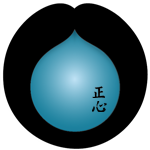The Art of Effortless Power
In this new approach to teaching the Art, Ralston plans to implement the practice and study of the Art as a means to reveal limits in the students’ experience and to create new openings for experience outside these limits.
Often we focus so hard on the technical side of an art that we neglect the subtle qualities of relationship that are crucial to masterful interaction. We mindlessly inflict our techniques upon our partner, the planet, the ball, the team, or the instrument.
Mastery, on the other hand, is a thoroughly open and creative experience — the ability to relate to each particular situation and to any changes that occur. This principle applies to all relationships, not just the ones we call martial.
What is The Art of Effortless Power?
The Art of Effortless Power has its roots loosely related to traditional arts like T’ai Chi, Aikido, and Judo, with contributions from Pa Kua, Jujitsu, and influence from boxing. This Art is primarily an art of throwing and uprooting. The student learns to neutralize aggression, blend with outside forces, disrupt the balance and power of attackers and project them through space or throw them to the ground. The Art of Effortless Power incorporates the ground-breaking explorations that have distinguished the teachings of Peter Ralston.
The Art of Effortless Power is uniquely geared to meet any situation because it is founded on understanding the principles in which all interaction takes place. It has been designed out of a deep and profound experience of the principles of effortless power and effective interaction.
Consider what two weeks of hands-on experience with the founder of the art could teach you. Seeing the art unfold in its entire form day after day in this course is an opportunity difficult to duplicate in a piecemeal fashion. Such intense immersion in an art provides the best ground for breakthroughs and leaps in ability. After this retreat you will have a genuine working knowledge of the Art of Effortless Power.
No previous training is necessary; but if you haven’t studied with Ralston before you should start with week one
Training will be eight to nine hours a day. Generally, a day will begin at 8:30am with a warm-up and training period, then a short break and a morning class. A lunch break is followed by two more afternoon classes. We will break for dinner and end the day with evening classes, wrapping up around 9 P.M.
Videos:
Please familiarize yourself thoroughly with the video: An Introduction to the Arts of Cheng Hsin.
Read the books:
Zen Body Being and
The Principles of Effortless Power, especially Chapter Nine of the new edition. In The Art of Effortless Power try to work out Book Two as best you can, and familiarize yourself with the techniques and the principles.
